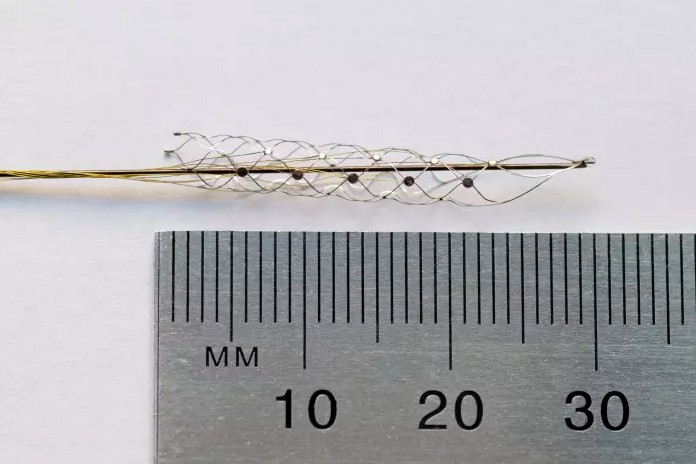DARPA’s New Neural Implant Has a Sneaky Way of Getting Inside Heads
DARPA is determined to develop brain-machine interface technology capable of safely and reliably recording enough information from neurons to control “high-performance prosthetic limbs” that will help amputees or people with paralysis regain lost movement. A new implantable device invented by researchers at the University of Melbourne in Australia could be a big step in that direction.
The procedure for implanting the “stentrode,” a stent-like device containing an array of electrodes, builds on established surgical techniques that use blood vessels as portals for accessing different areas of the body. Unlike traditional approaches to putting recording devices in the brain, it doesn’t require opening the skull and bypasses the risks associated with such an invasive procedure.
Instead, the device, the size of a paper clip, is delivered via a catheter inserted into a blood vessel in the neck. In a proof-of-concept demonstration in sheep, the researchers gathered “high-fidelity” measurements from the region of the brain that controls voluntary movement. They were able to record from freely moving sheep for up to 190 days.

Clearly it’s a cool idea, but it’s too early to tell if it is better than other, less-invasive approaches to delivering electrode arrays to the brain, or whether it will work in people. The researchers are planning to begin a human clinical trial next year at a hospital in Melbourne.
(Sources: DARPA, Nature Biotechnology)
Keep Reading
Most Popular
Large language models can do jaw-dropping things. But nobody knows exactly why.
And that's a problem. Figuring it out is one of the biggest scientific puzzles of our time and a crucial step towards controlling more powerful future models.
The problem with plug-in hybrids? Their drivers.
Plug-in hybrids are often sold as a transition to EVs, but new data from Europe shows we’re still underestimating the emissions they produce.
How scientists traced a mysterious covid case back to six toilets
When wastewater surveillance turns into a hunt for a single infected individual, the ethics get tricky.
Google DeepMind’s new generative model makes Super Mario–like games from scratch
Genie learns how to control games by watching hours and hours of video. It could help train next-gen robots too.
Stay connected
Get the latest updates from
MIT Technology Review
Discover special offers, top stories, upcoming events, and more.